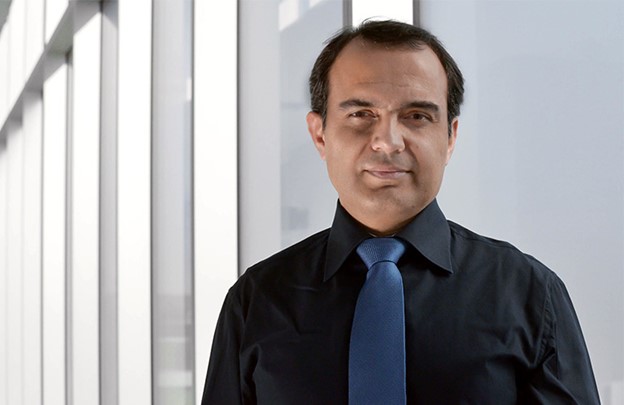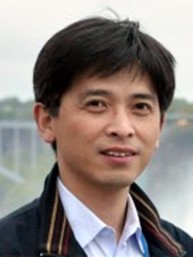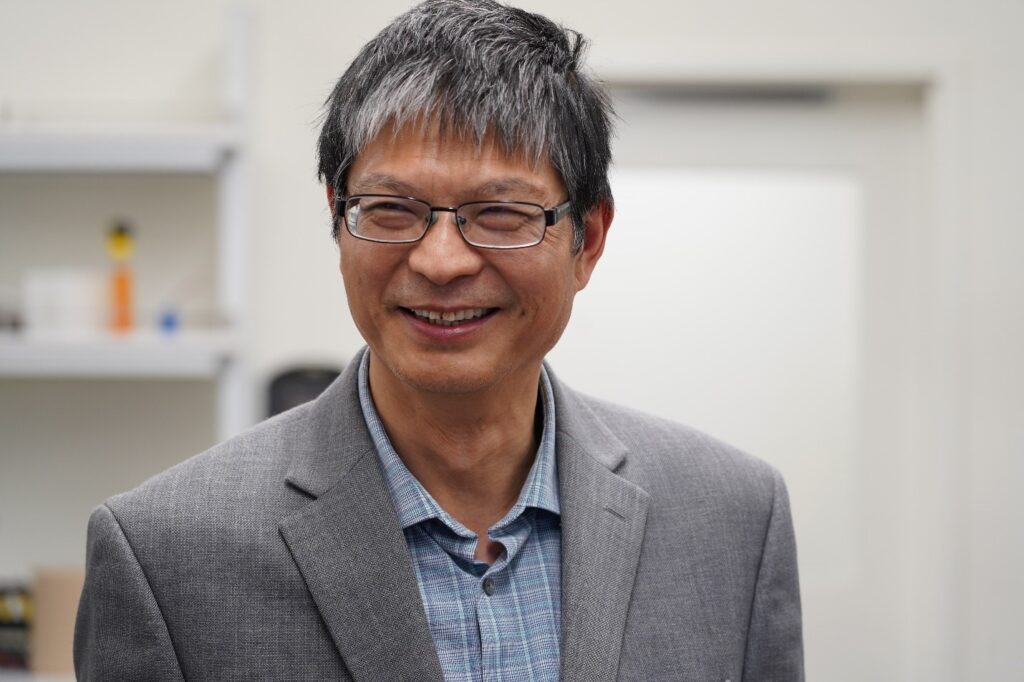
Prof. Dr. Babak Nahid-Mobarakeh
IEEE Fellow
Professor in Electrical Engineering,
McMaster University, Canada
Role of Motor Drives and Control in Transportation Electrification
Abstract
For over two decades, the electrification of transportation systems has been underway, in which hydraulic actuators and traction engines are being replaced by electric motor drives. The aim is to enhance propulsion efficiency and reduce maintenance costs and environmental impact. To get there, the transportation industry must develop new electronic, electrical, and mechanical components, and look at new means to monitor them throughout their operating life. Hence, various motor drives have been investigated for transportation electrification, e.g. two- and multilevel voltage source inverters (VSI), Z-source inverters, Y-inverters and current source inverters (CSI) together with permanent-magnet (PM) motors, wound-rotor motors, switched-reluctance motors (SRM) and permanent-magnet assisted synchronous reluctance motors (PMa-SynRM).
In this keynote, after a quick overview of the concepts and presentation of some existing motor drive solutions in electrified transportation systems, the speaker focuses on some specific use cases and their operating requirements including fault-tolerant capability and control. Different topologies will be studied and compared in terms of reliability, power density, and cost. Then, the state of the art of motor control methods, including control algorithms and modulation techniques, and their role in electrified transportation systems will be presented. Finally, future challenges and trends in electric motor control for electrified transportation will be discussed.
Keywords: Motor drives; nonlinear and robust control for power converters; health-monitoring, fault detection and fault-tolerant capability and control of power converters; design, control, and stabilization of microgrids.
Biography
Dr. Babak Nahid-Mobarakeh (M’05–SM’12–F’22) received the Ph.D. degree in electrical engineering from the Institut National Polytechnique de Lorraine (INPL), Nancy, France, in 2001. From 2001 to 2006, he was with the Centre de Robotique, Electrotechnique et Automatique (CREA), University of Picardie, Amiens, France. In September 2006, he joined the Ecole Nationale Superieured’Electricite et de Mecanique (ENSEM), University of Lorraine, Nancy, where he was a Professor until December 2019. Since January 2020, he has been a Professor with McMaster University, Hamilton, ON, Canada.
Dr. Nahid-Mobarakeh has authored or co-authored more than 300 international peer-reviewed journal and conference papers as well as several book chapters. He holds 7 published patents. He is the recipient of several IEEE awards. He was the General Chair of the 2020 IEEE Transportation Electrification Conference and Expo. Between 2012 and 2019, he served as an Executive Officer and Committee Administrator for the Industrial Automation and Control Committee (IACC) of the IEEE Industry Applications Society (IAS). He was also a Technical Committee Paper Review Chair of the IEEE Trans. on Industry Applications. Currently, he is the Vice Chair of the IEEE Power Electronics Society (PELS) Technical Committee on Electrified Transportation Systems. He is also a member of the Power Electronics and Motion Control (PEMC) Council.

Prof. Dr. Jian-Xin Shen
Deputy Dean of College, Director, Institute of Aerospace and Special Electrical Machines, College of Electrical Engineering
Zhejiang University, Hangzhou, China
Electromagnetic Vibration of Electrical Machines – Theoretical Analysis and Optimal Design
Abstract
NVH is a critical performance for electrical machines in automotive, household, industry and many other fields. Electromagnetic vibration contributes the most to the NVH performance, whilst other mechanical and electric sources may behave through the electromagnetic effect, too. This is to provide a comprehensive presentation on the electromagnetic vibration of electrical machines, which is organized in the following three aspects: 1. a theoretical analysis of the electromagnetic vibration mechanism, including the analysis of electromagnetic forces and machine modes, and the effects of rotor eccentricity and inverter high-frequency current harmonics; 2. an objective comparison of some specific machine topologies for vibration and noise reduction, including their advantages and side effect on other performances of the machine; 3. an introduction to the multi-objective optimization methods of electromagnetic vibration, including a rapid optimization based on semi-analytical model, integration of multiple surrogate models and optimization algorithms. An electromagnetic vibration optimization platform will be presented, too, using which an electric motor for vehicle application is optimized as a study case.
Keywords: Electromagnetic vibration, electromagnetic force, modal analysis, motor topology, multi-objective design, surrogate model, optimization algorithm
Biography
Jian-Xin Shen received the B.Eng. and M.Sc. degrees from Xi’an Jiaotong University, China in 1991 and 1994, respectively, and the Ph.D. degree from Zhejiang University, China in 1997, all in electrical engineering. He was with Nanyang Technological University, Singapore in 1997-1999, the University of Sheffield, UK in 1999-2002, and the IMRA Europe SAS, UK Research Centre, UK in 2002-2004. Since 2004, he has been a Professor of Electrical Engineering with Zhejiang University. Prof. Shen’s main research interests include topologies, control and applications of permanent magnet machines and drives, and renewable energies. He has authored 320+ technical papers, and holds 50 patents. He was the recipient of a Prize Paper Award from the IEEE Industry Applications Society, Best Paper Awards from 11 international conferences, and the 2019 Nagamori Award with recognition of his contribution to high-speed electrical machines. He is a Distinguished Lecturer of IEEE VTS and IAS societies, and was a member-at-large of IEEE IAS, a member of IEEE Nikola Tesla Award Committee, and General Chair of 3 IEEE sponsored international conferences.

Dr. Amit K. Gupta
Head of Rolls-Royce Electrical, Singapore
Nanyang Technological University, Singapore
Electrical Power and Propulsion
Abstract
Rolls-Royce Electrical is aiming to become the leading supplier for all-electric and hybrid-electric systems for the Advanced Air Mobility market. Our systems under design feature the latest technology, from power generation and energy storage via power electronics and control systems to electric motors and we are focused on developing our products for the Advanced Air mobility market. As the battery technology develops the range, the markets in which these aircraft can operate will open. This is why we are also developing new turbogenerator technology for the Advanced Air Mobility market. It will be designed for hybrid-electric applications and will have scalable power offerings. As an on-board power source, it will complement the Rolls-Royce electrical propulsion portfolio, enabling extended range on sustainable aviation fuels and later as it comes available through hydrogen combustion. We are also looking at the services that these aircraft will need and how we can offer the digital and services capability that will support these aircraft.
Keywords: Power Electronics, Power Systems, Energy Storage, Control Systems, System Design, Electrical Equipment Health Management, Microgrid, Transport Electrification
Biography
Amit K. Gupta holds a bachelor’s degree in electrical engineering from the Indian Institute of Technology (IIT)-Roorkee and a Ph.D. in Electrical Engineering from National University of Singapore (NUS). During 2000-12, he worked for Bechtel Corporation, Samsung Heavy Industries, Delphi Automotive Systems and Vestas Wind Systems. Since August 2012, he is Head of Rolls-Royce Electrical at Rolls-Royce Singapore Pte Ltd. He is Director of the Electrical Programme at Rolls-Royce@NTU Corporate lab and Rolls-Royce Director for the Electrical Power System Integration Lab @ NTU (EPSIL@N).
He holds 65 patents/patent applications and published more than 170 papers in international conferences and journals. He has been Adjunct Professor with a few universities. He holds a six sigma Green Belt Certificate from Delphi Automotive Systems and trained in six sigma Black Belt techniques through Vestas Wind Systems. He is a recipient of, “2021 – IEEE McMurray Award for Industry Achievements in Power Electronics”, “2019 – The IET Premium Awards”, “2016 – inaugural IEEE R10 Industry-Academia collaboration award for developing world class electrical R&D lab EPSIL@N”, “2005- Prize paper from the IEEE IAS – Industrial Power Converter Committee”. He also received several Rolls-Royce Engineering & Technology (E&T) Awards for Engineering Excellence and Vestas Innovation excellence award 2009 for being top 5 innovators of Vestas Global Research.
He is an IEEE IAS distinguished lecturer for 2022-23. He is an Associate Editor for IEEE Transactions on Power Electronics and plays an active role in organizing electrical power engineering conferences in Asia. He is Fellow of IEEE – USA, IET – UK, IES – Singapore, and a Chartered Engineer – Engineering Council (UK).

Prof. Dr. Chris Mi
Distinguished Professor
Electrical and Computer Engineering
San Diego State University
Reuse and Recycling of EV batteries
Abstract
The number of electric vehicles is growing rapidly, and so are retired batteries. The batteries are costly in production and recycling. Handling retired EV batteries is thus important for both the economy and the environment. DOE and CEC have funded multiple projects to promote second-life EV batteries (SLBs) in storage applications. However, deploying SLBs will encounter serious issues, such as lifetime, cost, safety, liability, and regulations. This talk will discuss the result of a recent CEC-funded project, including the aging mechanism, charge/discharge methods, thermal management, cell/pack balancing, energy management, policy, standards, and fire codes related to energy storage systems using second-life EV batteries as well as novel approaches for recycling.
Biography
Chris Mi received his B.S. and M.S. degrees from Northwestern Polytechnical University, Xi’an, China, and Ph. D. from the University of Toronto, Canada, in 1985, 1988, and 2001, respectively, all in electrical engineering. He is a Fellow of IEEE and SAE, and is a Distinguished Professor of Electrical and Computer Engineering at San Diego State University. He was previously a faculty member at the University of Michigan-Dearborn from 2001 to 2015, and an Electrical Engineer with General Electric from 2000 to 2001. He also served as the CTO of 1Power Solutions from 2008 to 2011, and CTO of EV Safe Charger from 2021 to 2022.
Dr. Mi has published five books, 210 journal papers and 130 conference papers, and owns 20 patents. He served as Area Editor, Guest-Editor-in-Chief, and Associate Editor of multiple IEEE Transactions, as well as the General Chair or Program Chair of multiple IEEE international conferences. Dr. Mi has won numerous awards, including the “Distinguished Teaching Award” and “Distinguished Research Award” from the University of Michigan-Dearborn, IEEE Region 4 “Outstanding Engineer Award,” IEEE Southeastern Michigan Section “Outstanding Professional Award,” and SAE “Environmental Excellence in Transportation (E2T) Award.” He is the recipient of three Best Paper Awards from IEEE Transactions on Power Electronics and the 2019 Inaugural IEEE Power Electronics Emerging Technology Award. In 2022, he received the Albert W. Johnson Award and was named the Distinguished Professor by San Diego State University, the highest honor given to a SDSU faculty member, and only one award is given each year. In 2023, he received the IEEE PELS Achievement Award in Vehicle and Transportation Systems.
